
The Railroad Tracks at Dry Fork, Jim’s Warehouse, and the old Post Office/Barbershop, 2021
“I reckon, if people outside of Dry Fork didn’t know the people inside, they’d think you made up half of what you say.”
Garland Grant (1929-2020), storeowner & lifelong resident of the community
I’ll preface this page with a few thoughts on what Dry Fork means to me. Dry Fork is the community I spent the first twenty years of my life within. It is my favorite place in the world and my family is greatly entwined with the bountiful history of the tiny place. The buildings, people, and memories that remain are what sparked my interest to preserve the past and learn more about my identity. Here are some of my memories that paint Dry Fork for the place it is within my mind.
The beautiful White Oak Mountain was my backdrop for childhood. I was told Santa Claus flies right through a gap we could see in that mountain. Everything before us, to the mountain about two miles East, I could see what seemed like infinite pasturage. The cattle roamed as they pleased throughout the woods, to the White Oak Creek, where they foraged on plants and developed routine lives of their own.

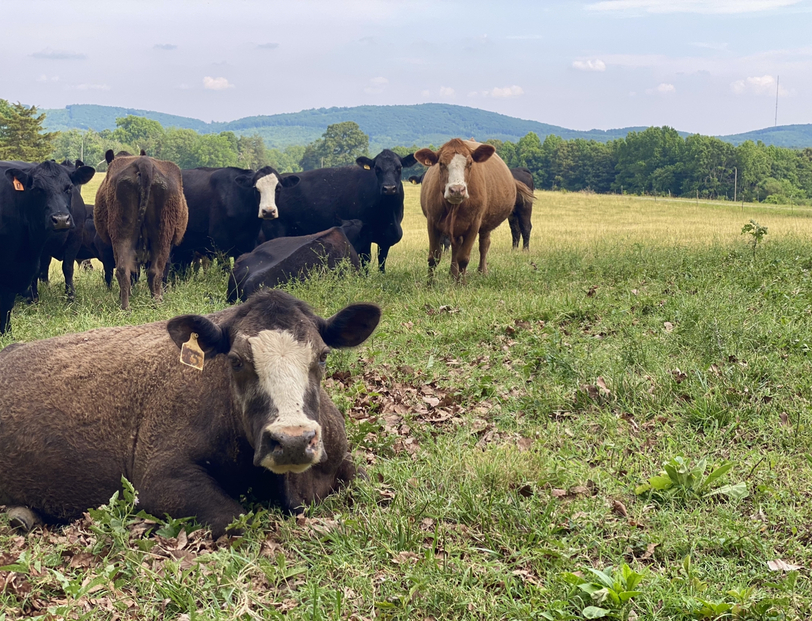
They each have personalities and are very curious animals. Almost every day, I’d walk down the dusty old dead end road with my grandparents and the cows would be on both sides. We walked down to the abandoned tobacco barns and the old fashioned homes where people used to live. My grandmother knew the pastures as the tobacco fields her father worked in. She made memories in the old barns and knew the people who occupied these falling-down structures. As each year passed I watched the old homes and barns crumble. Some of them still stand and others appear as a pile of wood and metal within a tree clump.
During my time at Chatham High School, I would take Jones Mill Road in the morning and sometimes didn’t pass a single car on the whole trip to school. It took about ten minutes to get there. This was also the path that many farm vehicles took during Summer, so I would sometimes follow the truck hauling pulled tobacco or see the trail of occasional tobacco leaves laying on the road that had blown off the truck. I always enjoyed turning the bend at Pudding Creek and seeing the old water wheel from the Pigg/Jones Mill.

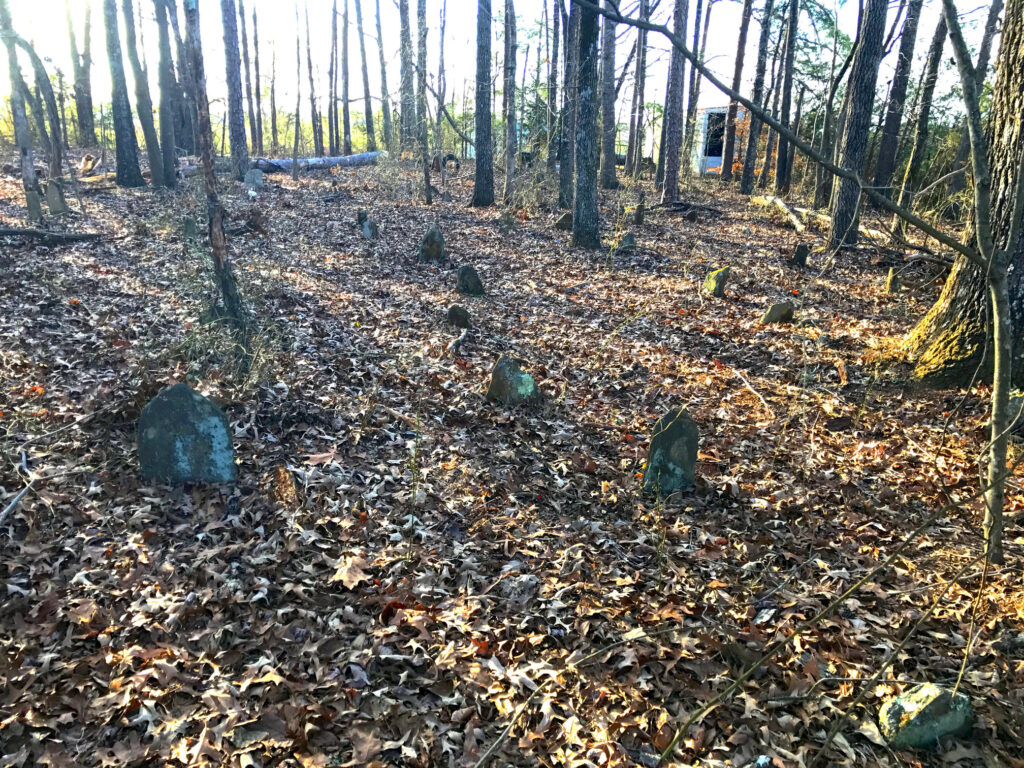
It is not uncommon for people of Dry Fork to live on property with family cemeteries. The 19th century stones were commonly made within the community, or just used unmarked fieldstones as an indication of burial. As the crow flies, about one-half mile North of our property is where my x4 great-grandfather John E. Goard/Goad (~1835-1919), a Civil War veteran, is buried. My x3 great-grandparents J. Richard & Nannie Mills Goard are also located directly beside him. Nonetheless, this cemetery is located at the end of a mile long curved dirt road patched with bricks, past some tobacco fields, then within a forested area.
My family has always enjoyed visiting the local cemeteries and graveyards. About a third of a mile from our property are two churches where four of my great-great grandparents are buried, also my great-grandparents, as well as many notable Dry Fork residents. At most of the church graveyards I can find an ancestor, distant aunt, uncle, or cousin. So, within a half-mile circle of my home I could trace six generations back.
To conclude, a lot of my memories of Dry Fork are about the seclusion of the land and the abandoned monuments which pointed to the idea of life. I did not get more acquainted with the local community until I found my passion for history and began doing genealogy research. I’ve since spoken with many distant cousins and descendants of the early Dry Fork settlers and seen how abundantly deep the roots are. I’ve wondered how deep they must be in every other little community like Dry Fork. However, I also realized that the Dry Fork I knew–while still my favorite place–is a shell of what it was about a century ago.
A History of the Village of Dry Fork
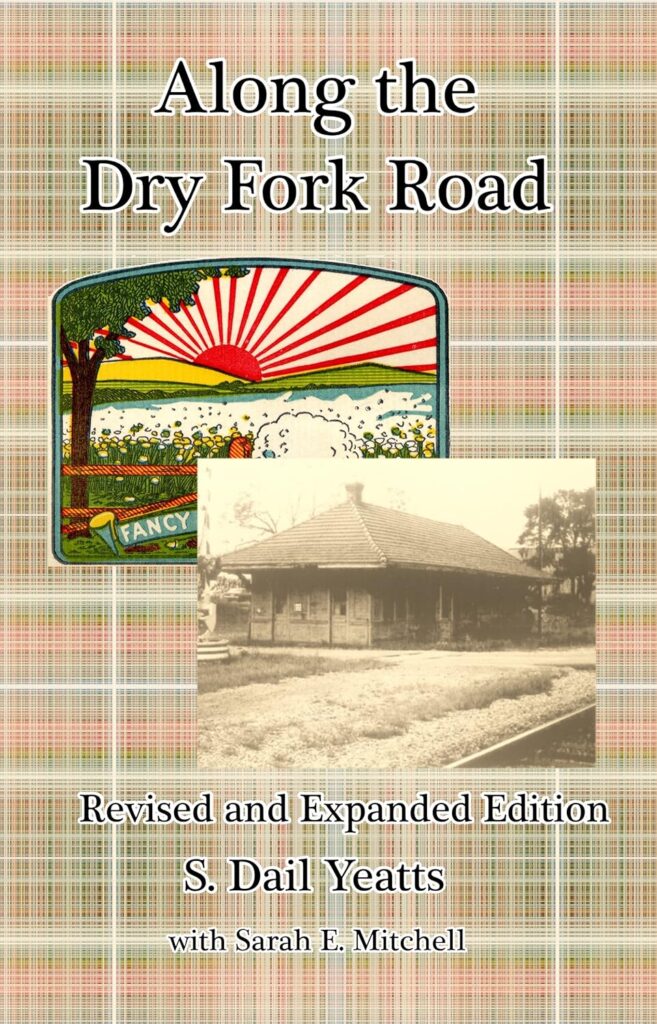
Recommended
Along the Dry Fork Road
To research more into the particular businesses and families of Dry Fork throughout the 20th century, read this book. The late S. Dail Yeatts wrote this goldmine of information and published a Revised and Expanded Edition with Sarah Mitchell in 2016.
Today, the definition of the land of “Dry Fork” is determined more in terms of voting precincts. A modern search on the area will say there are thousands of residents and it may appear like some big place. However, the core of Dry Fork Road remains, and dozens of surrounding communities that historically had their own individual names are now classified as Dry Fork as well.
There could be a book in itself recounting the conditions of the Dry Fork vicinity prior to the development of the railroad. Before the founding of Pittsylvania County in 1767 the frontier land was sparse with settlers and grist mills along the branches of Banister River. As a newly independent nation, small tobacco farming communities developed nearby as local settling families married and grew throughout the early 19th century. Of course, every major war took its toll on the families of Dry Fork as well. We cannot forget the lives cut short and the generations severed from growing up in a community to make their own.
As the story goes with hundreds and thousands of small rural communities throughout the United States: once the railroad was constructed new business development really took place. In 1874 the first Dry Fork Depot was constructed at the new railroad and local resident John E. Jones was appointed as Postmaster. New materials and new people were on freight through Dry Fork for the first time, so a community hub formed there at the depot.
The 1880 Census
The vicinity of Dry Fork was considered part of the Callands District in the 1880 Census. The majority of men kept farms or worked as farm laborers and the women kept house. A handful of men were railroad workers and several worked in tobacco factories. Some of the notable occupations were listed as follows (keep in mind, ages were typically estimates on the census):
- Benjamin Johnson, 26 year old blacksmith
- Millard F. Johnson, 21 year old wheelwright working in shop with his older brother Benjamin
- Joseph Burroughs, 73 year old cooper
- Julius Callame, a 30 year old house carpenter from Switzerland
- William Sprouse, a 22 year old railroad worker noted to have a crushed foot
- George Williams, a 25 year old merchant
- Charles Hutcherson, 18 year old clerk in store & brother-in-law to George Williams
- Wesley Taylor, 25 year old blacksmith, African-American
- Thomas Jones, 35 year old merchant
- Jordan Walker, 44 year old stone mason, African-American

Her brother Richard Goard is my x3 great-grandfather.
The Dry Fork vicinity sprouted new communities with their own identities. For example, the communities of Hopewell, Oakland, Whitmell, and Concord were centered around the churches of the same name. Some of the local communities were named after the prevailing settled families of that area, such as Hinesville, Piggs, Blairs, and Swansonville. Some of the other communities have names which have origins unknown to me. These old communities sustained stores, churches, and shops like the rest, including Weal, Wilmer (or “Wilma”), and Caddo. Other communities are descriptive of the landscape, for example Spring Garden and Pleasant Gap, which travels over White Oak Mountain.
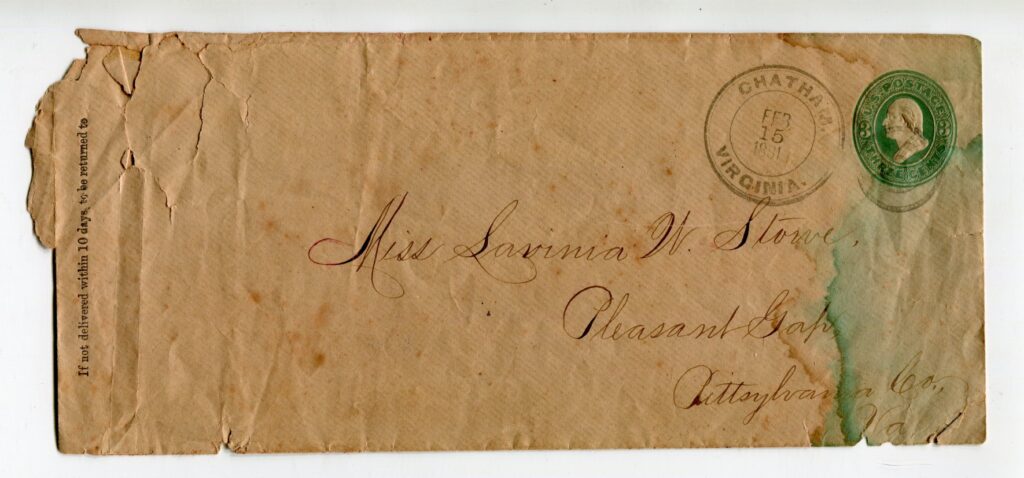
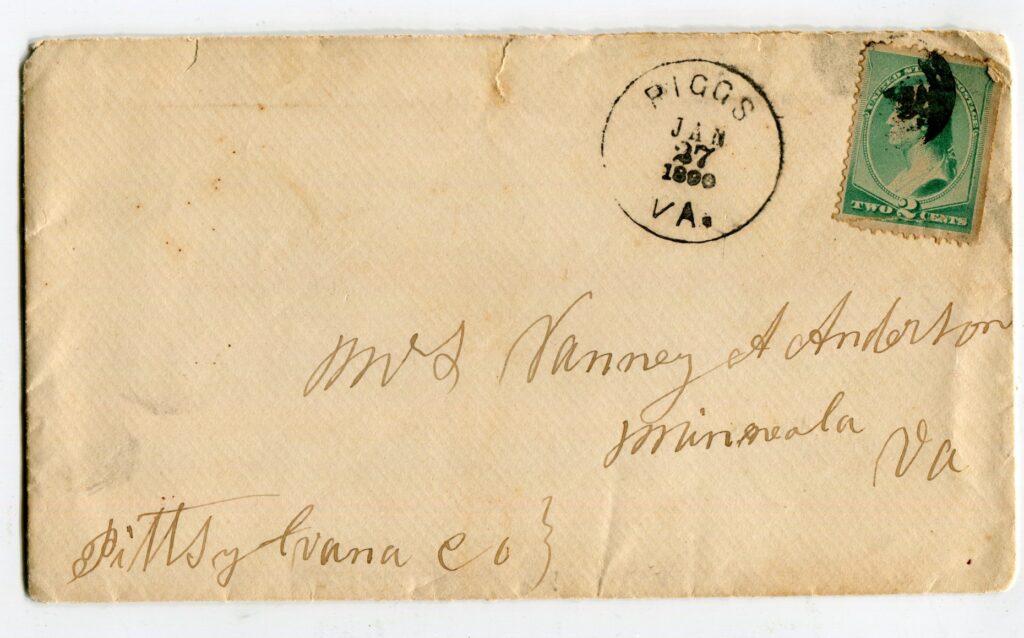
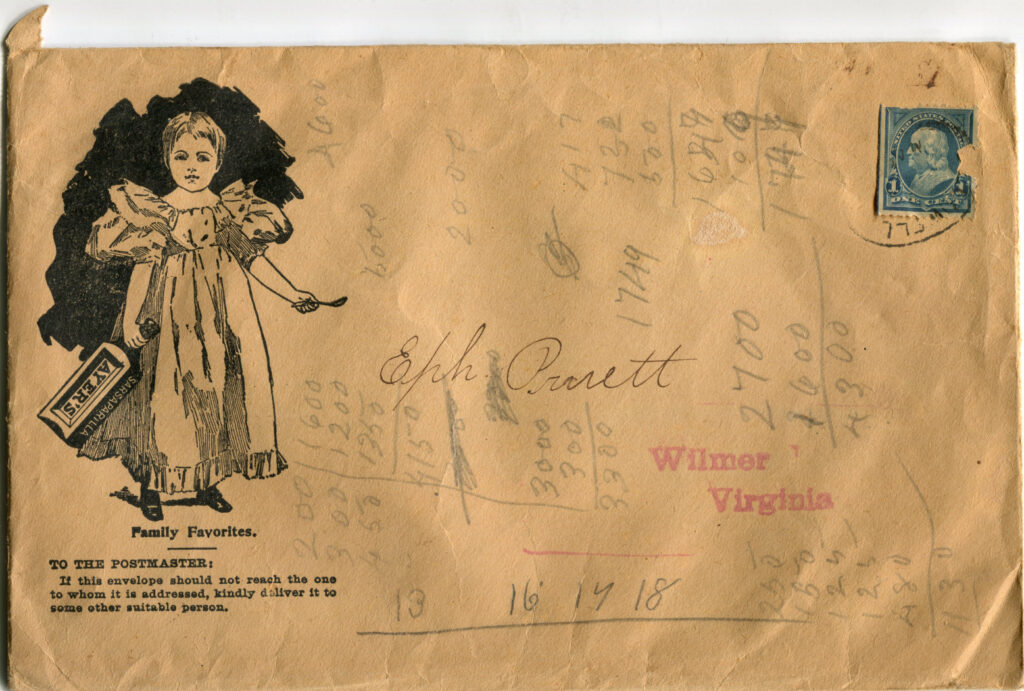
Dry Fork Town
By the turn of the 20th century, the Dry Fork Road was bustling with mules, carts, and small business. The following excerpt is from a book entitled “Yes There is a Dry Fork Virginia” by Charles B. Motley (1977). He described the covered wagons of Dry Fork from memory and his words form a scene that is easy to imagine.
“Covered wagons came from all directions traveling over the narrow winding and hilly dirt roads. Roads were not at all as we know them today. All were dirt with hills, knolls, and sharp bends. During late fall, winter, and early spring wagons were near hub-deep in mud, most of the remainder of the year wagons would create a cloud of dust. Wagon brakes were often insufficient to hold a heavy load when going downhill. Each wagon carried a heavy chain which would be placed through the wagon wheel and tied to the wagon in such a way as to cause the wheel to drag–not to turn. When roads were powder dry, fortunate were the men on the first wagon or two of the train, wagons to the rear traveled in a cloud of dust.”
The little village functioned as a town for a period of fourteen years between 15 March 1906 and 15 March 1920. While Dry Fork was designated as a town it was governed by the Chatham Magisterial District, which was one of seven districts in Pittsylvania County. The county authorities appointed a constable, supervisor, justices of the peace, and an overseer of the poor to manage the town’s administration. Dry Fork Town had a mayor, six councilmen, and one sergeant as follows:

Mayor of Dry Fork Town
James Stokley Evans
(1869-1908)
- A descendant of early settlers Richard Farthing (1745-1810) & John “The Old Scotchman” Watson (1705-1802). Watson is my ancestor three times.
- He died from Typhoid at the age of 39.

Councilman
Charlie Edward Ricketts
(1870-1932)
- Pictured with wife & children, 1899
- Son of Reuben B. Ricketts & Elizabeth Elliott Ricketts
- He worked briefly for Hutch Pigg at Pigg’s Mill
- He married Lucy Jane Mills, sister to Izetta Mills
- Grandfather to historian Robert “Danny” Ricketts (1941-2020)
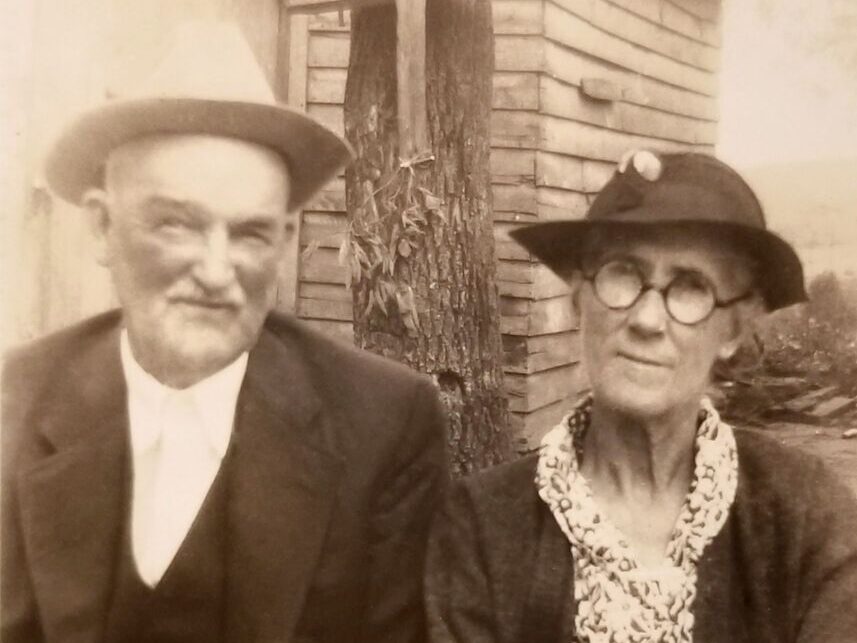
Councilman
Charles Thomas Owen
(1869-1948)
- Pictured with wife, circa 1930’s
- Son of David Owen, CSA veteran of the 18th VA Infantry
- He married Izetta Mills, sister to Lucy Jane Mills
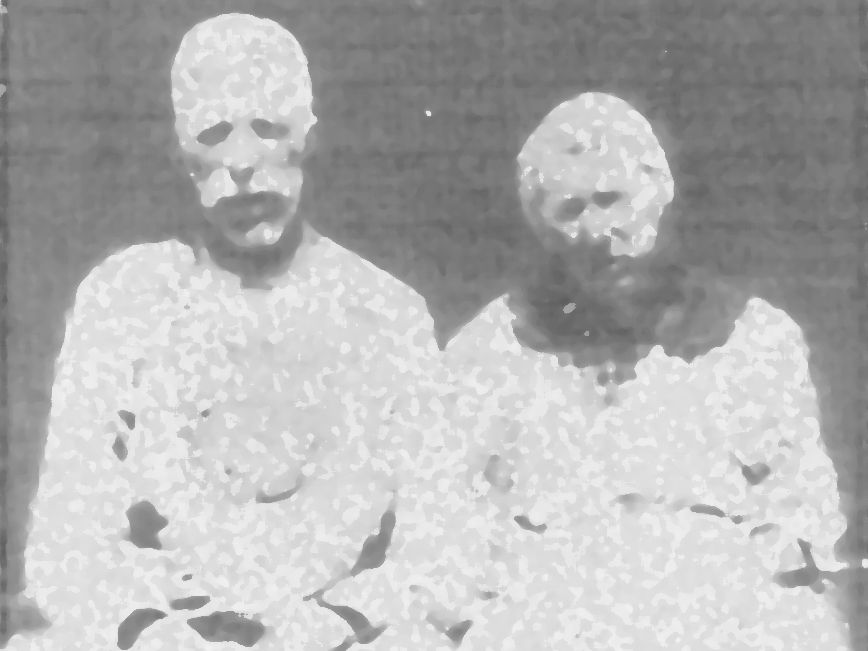
Councilman
John Richard Goard
(1861-1932)
- Pictured with wife, circa 1920
- His father, John Eddy Goad/Goard, was a CSA veteran of the 57th VA Infantry
- He married Nannie S. Mills, a cousin to Lucy & Izetta Mills
- They are x3 Great-Grandparents to Kyle Griffith

Councilman
James Richard Scruggs
(1871-1928)
- He married Rosa Shelton of the local Shelton family
- He was a descendant of early county settlers Richard Whitehead (1773-1843) & Pency Camden Whitehead (1775-1851), also my ancestors
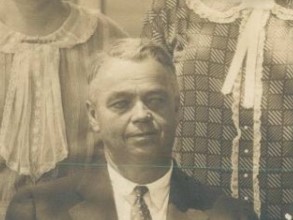
Councilman
James William “Bud” Bryant
(1874-1943)
- served as postmaster 1905-1909 at his store (succeeded by Charlie Hannibal Jones)
- Operated a freight and express office at the railroad tracks with brothers Charles D. Bryant (1876-1951) and Letcher Ambrose Bryant (1882-1947).
- “Bryant Bros. & Co. General Merchandise” sold “Drugs, Heavy and Fancy Groceries, & Fertilizers”

Councilman
William Christopher Brumfield
(1871-1957)
- He was a descendant of early county settlers Thomas Mustain (1713-1791) & William Dove (1758-1847), also my ancestors
- His son Beverley Brumfield married Pocahontas Grant, a niece to the sergeant
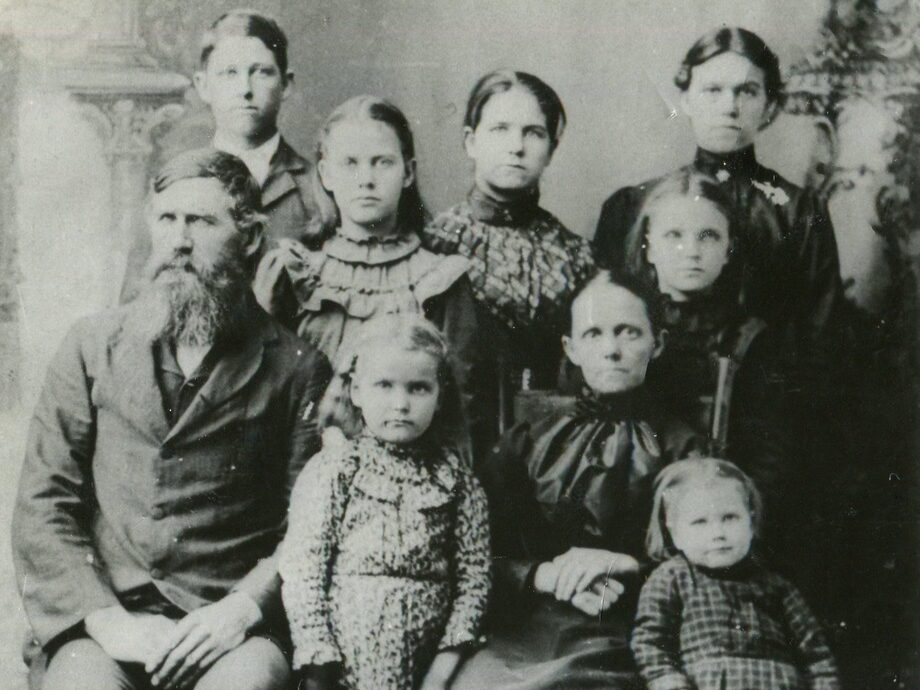
Sergeant of Dry Fork Town
John Peter Grant
(1858-1939)
- Pictured with wife & family, circa 1896
- He married Anna Serena Yates (1863-1901), a descendant of tavern keeper Stephen Yates
- He was the father to Charlie W. Grant of C. W. Grant’s Store
- He was a brother to Isaac T. Grant (1861-1938), my x3 Great-Grandfather
- Sam Stowe served as sergeant after J. P. Grant
Enumeration of Dry Fork Town – 1910 Census
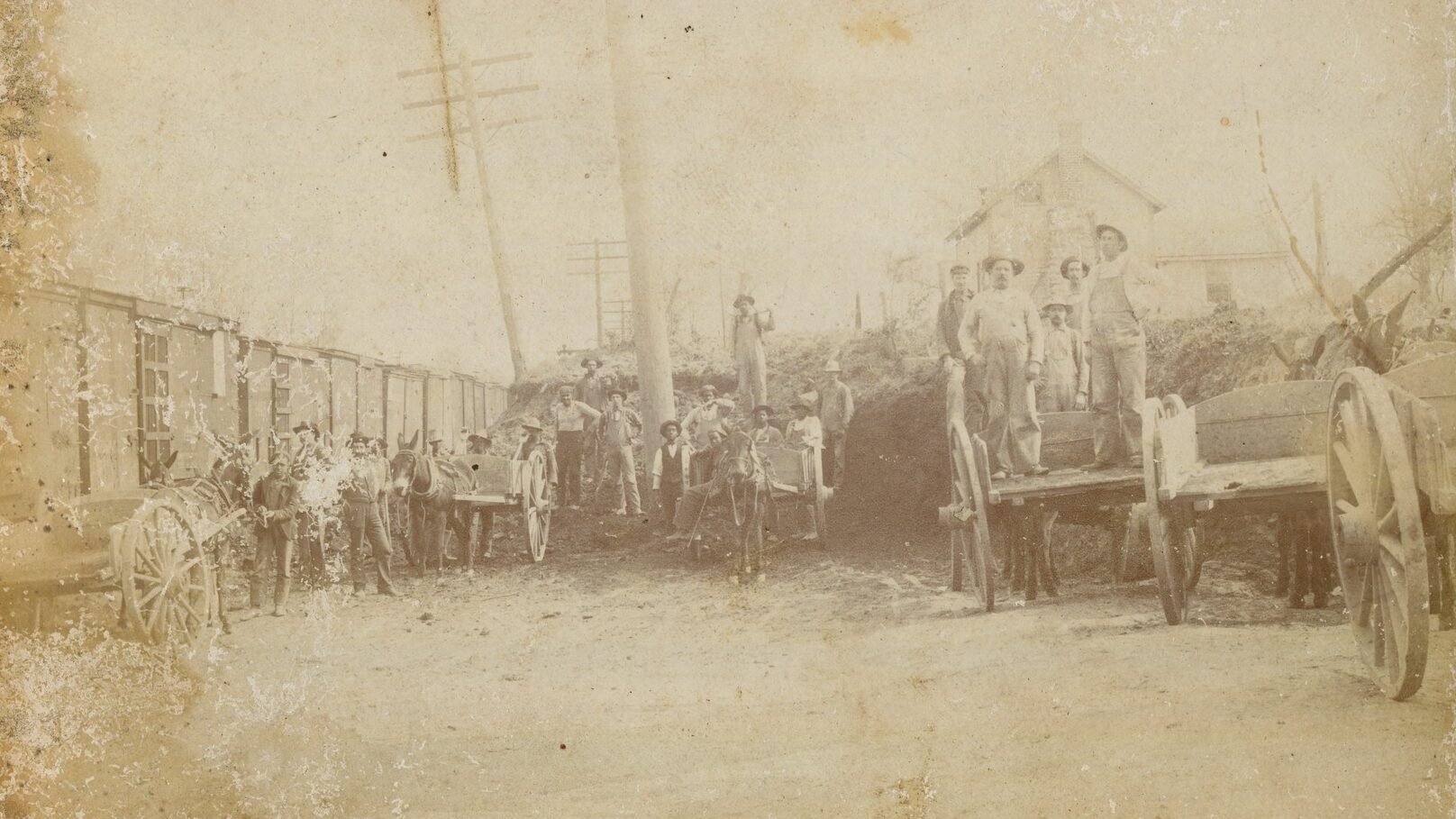
Photograph taken at Dry Fork Railroad, circa 1910s
There were 110 people in all within 19 families. Here were the heads of household within Dry Fork Town in 1910:
- Charles Hannibal Jones, postmaster (pictured)
- Benjamin R. Yeatts, RFD mail carrier (pictured)
- John H. Whorley, house carpenter
- Beverley Jones, corn whiskey distiller
- Edward Jones, corn whiskey distiller
- Robert E. Elliott, general store merchant
- William A. Taylor, farmer
- Jessie Taylor, farmer
- Walter Simmons, farmer
- Frank Strange, farmer
- Daniel Motley[?], farmer
- Joseph Powell, odd job worker
- Albert Powell, railroad laborer
- John Powell, railroad laborer
- Peter Walton, railroad laborer
- James Dixon, railroad laborer
- William Dalton, railroad foreman
- Henry Richardson, odd job worker
- Lawrence D. Clark (1886-1918), Southern Railway
Depot Agent
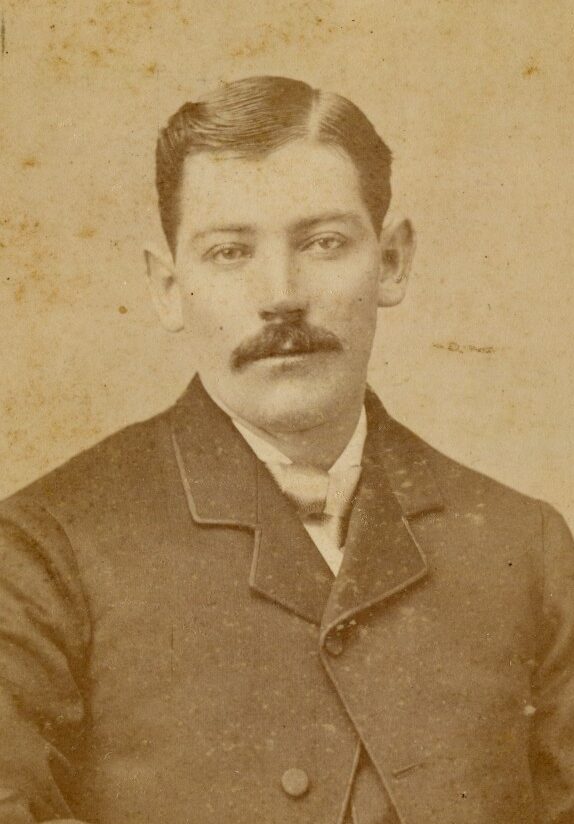
(1881-1974) circa 1902
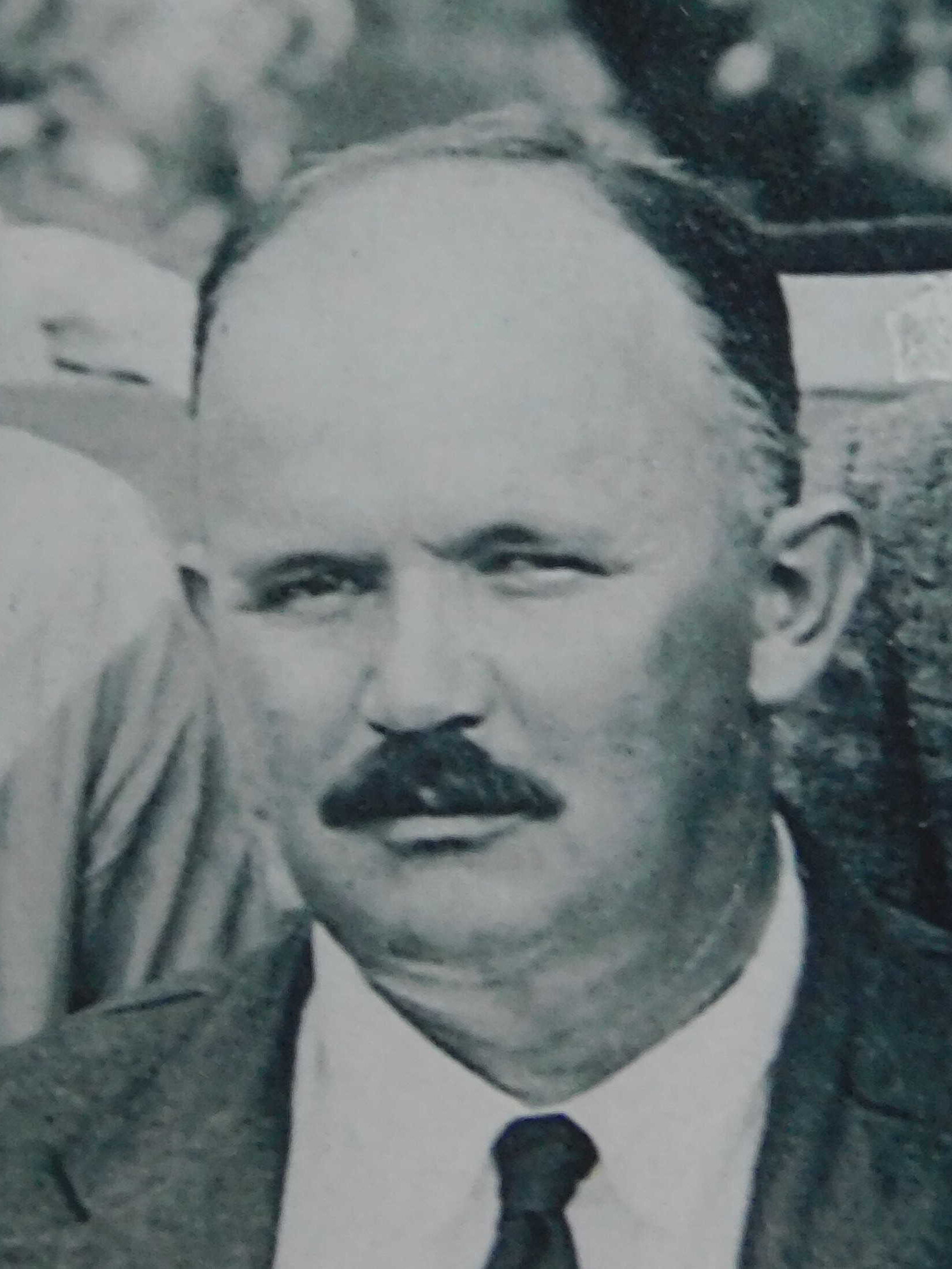
(1883-1941) circa 1920’s
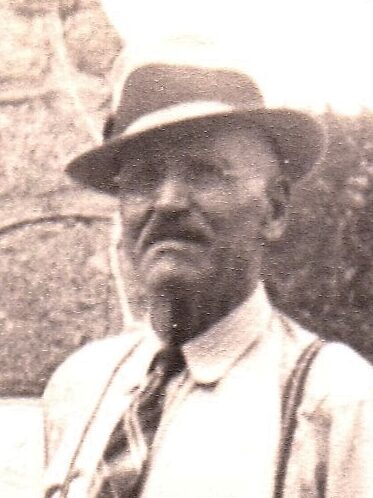
(1868-1955) circa 1930
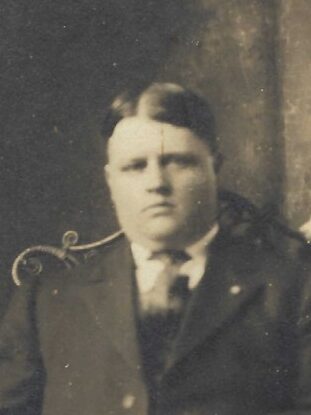
(1884-1944) circa 1910’s
County officials from Dry Fork
- George W. Giles of Dry Fork served as a justice of the peace in 1908 and 1909.
- William Ward Pigg of Dry Fork served as a constable from 1908 until 1910.
- There was no constable between 1911 and 1916.
- A. H. Cox of Dry Fork, served as a fourth justice of peace from 1917 until 1919 upon request for additional law enforcement.
- Ellis Hannibal Jones of Dry Fork served as a justice of the peace in 1921
- He was the father to postmaster and barber Charlie Hannibal Jones
- Benjamin Reaves Yeatts of Dry Fork also served as a justice of the peace from 1921 until 1923
- He married Madie Jones Yeatts, daughter of Ellis H. Jones.

Not Incorporated – 1920 Census
Dry Fork Town was annulled as a town merely two months after the 1920 census was recorded, so someone went back, marked through the name, and wrote “not incorporated.” Here were the sixteen families living in Dry Fork during its last couple months as a town:
- Raleigh Crane, chicken peddler
- William Dalton, railroad foreman
- James B. Hardy, blacksmith
- Sidney “Sid” Jones, farmer
- Grover T. Jones, miller, son of Sid Jones
- Edward “Ed” Jones, farmer
- Richard Goard, farmer
- Hugh Goard, farmer
- Hurt Mitchell, mill foreman
- Beverley Shelton, truck farmer
- Charlie H. Jones, postmaster
- John A. Wallace, mill laborer
- Tom J. Midkiff, miller
- Turner Payne, farm laborer
- Bedney G. Shields, house carpenter
- twin brother to Shack Shields
- Bob Powell, farm laborer
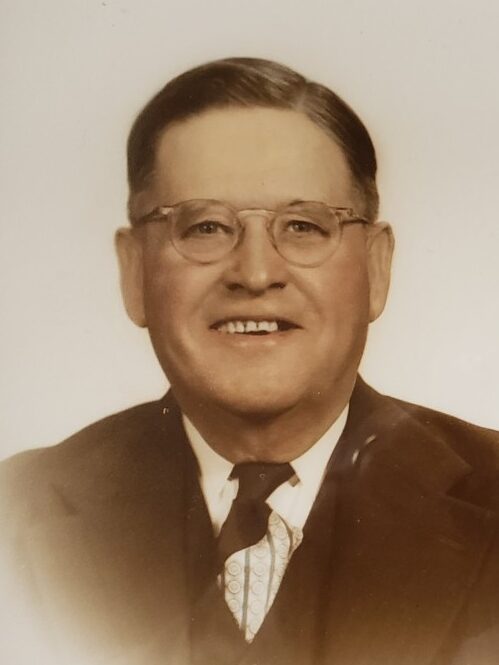
circa 1930’s
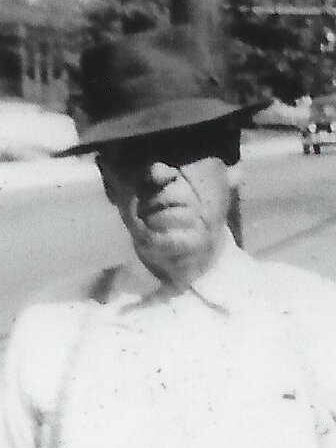
circa 1930’s
According to Charles Motley in “Yes There is a Dry Fork Virginia,” six passenger trains stopped in Dry Fork. Two of them were discontinued around 1923, and the other four made stops at the depot until around 1945. After the village reverted to “unincorporated community” status, small business endeavors continued to be developed and grew to establish reputations. Many Dry Fork residents hosted small stores, or woodworking shops, and other services from near their domestic properties.
Electricity did not have a presence in Dry Fork until the mid 1930’s. After this point, the local stores could refrigerate their dairy and meats. The late S. Dail Yeatts (1928-1922) remembered when the community members invested in electricity and bought radios, which “connected them to the world.”
More notable Dry Fork residents

James Wesley “Jim” Hearp Sr. (1850-1924)
& wife Lucy Ann Ricketts (1855-1948)
“German Jim” Hearp (pronounced like harp) was a memorable character, and stories of his life remain in Dry Fork today. He pursued a handful of services, including blacksmithing, tombstone making, gold mining, farming, and peddling hams. Together he and his wife raised eleven children, only one of which did not live to adulthood.
Here’s a complex genealogy equation. When Jim’s sister Celeste Hearp married Reuben B. Ricketts, she became the mother-in-law to her brother’s wife, Lucy Ricketts Hearp.
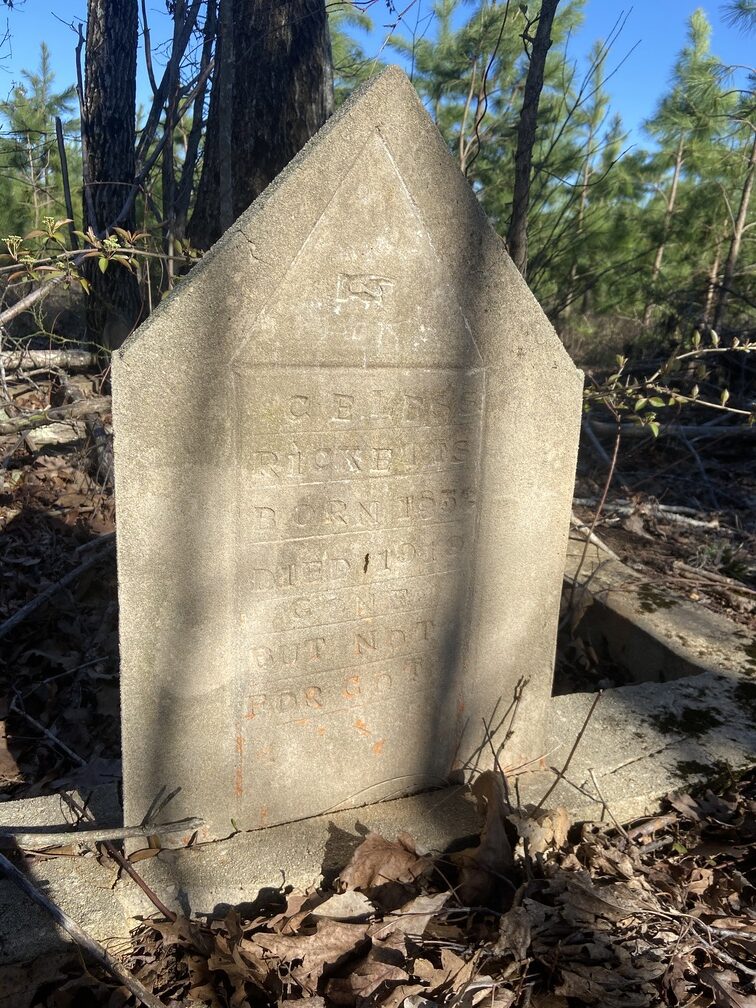
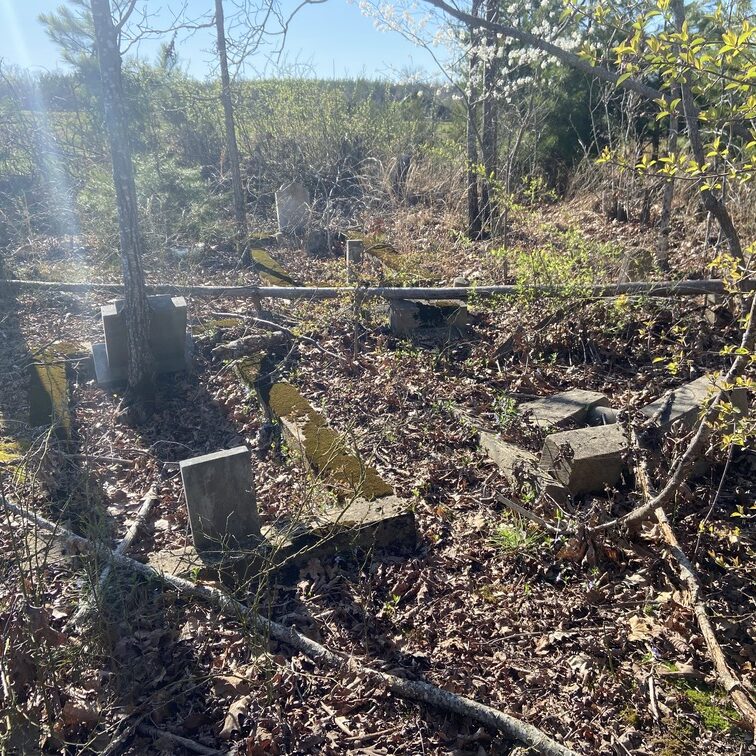
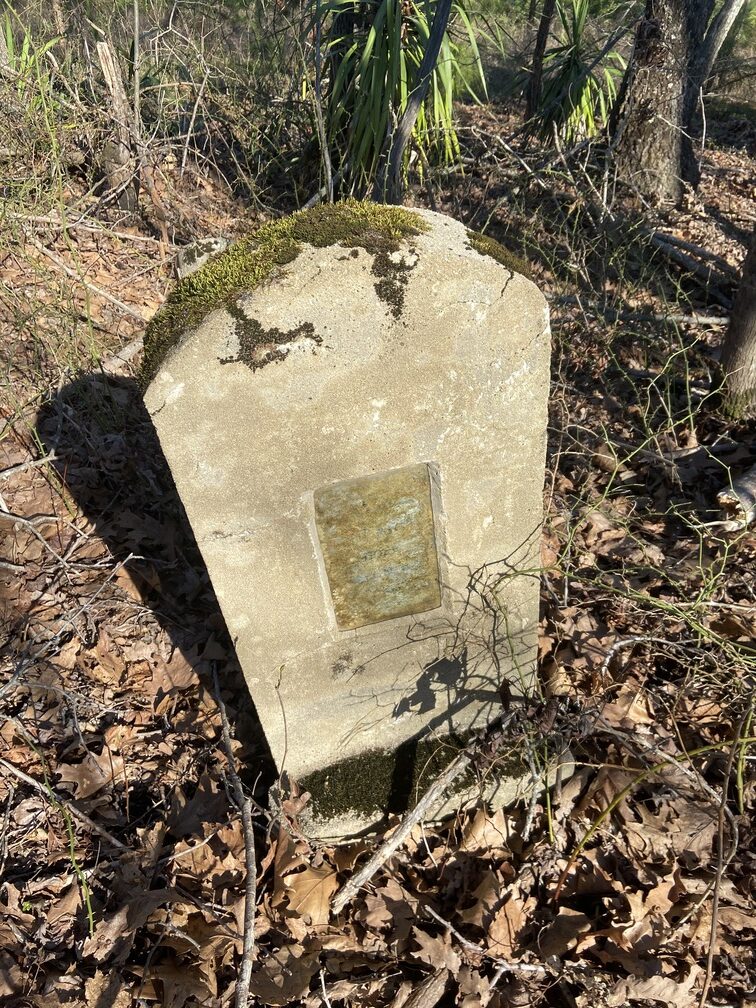
Charles Henry “Charlie” Price (1859-1930)
The Price family is among the oldest and expansive in the Dry Fork area. For example, there are marriage links between the Price family and the surnames Pigg, Powell, Parrish, and Stowe. In 1918, the family of Charlie Price and his wife Elizabeth “Bettie” Jones Price (1873-1952) offered a plot of land for the community to build a Pentecostal Holiness Church in Dry Fork. On that land, a small frame church about 30 ft x 45 ft was constructed. In 1951, the present brick building was constructed and it has had several additions and renovations since.
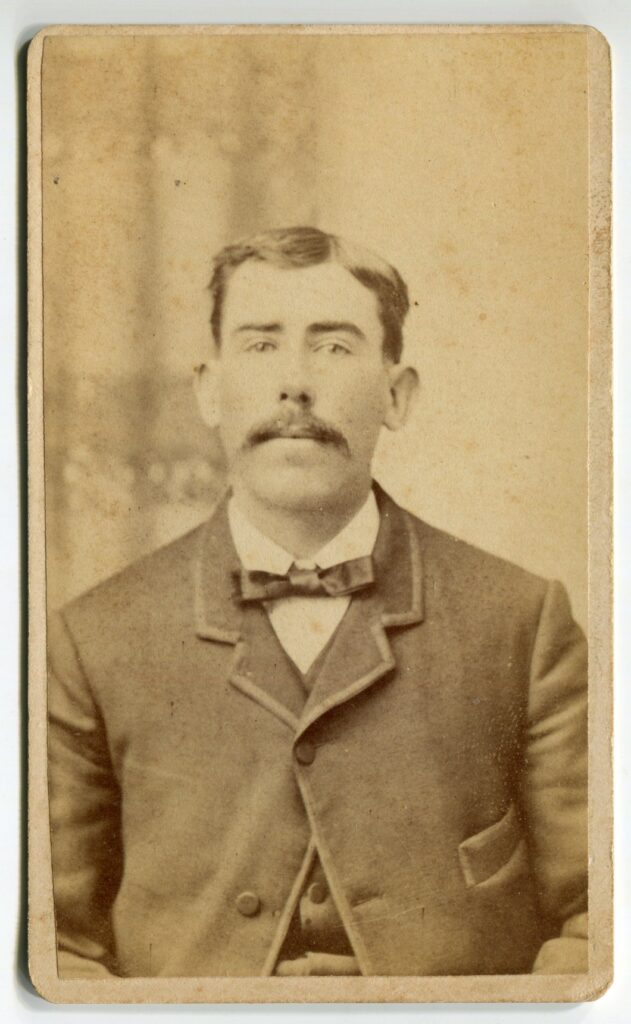
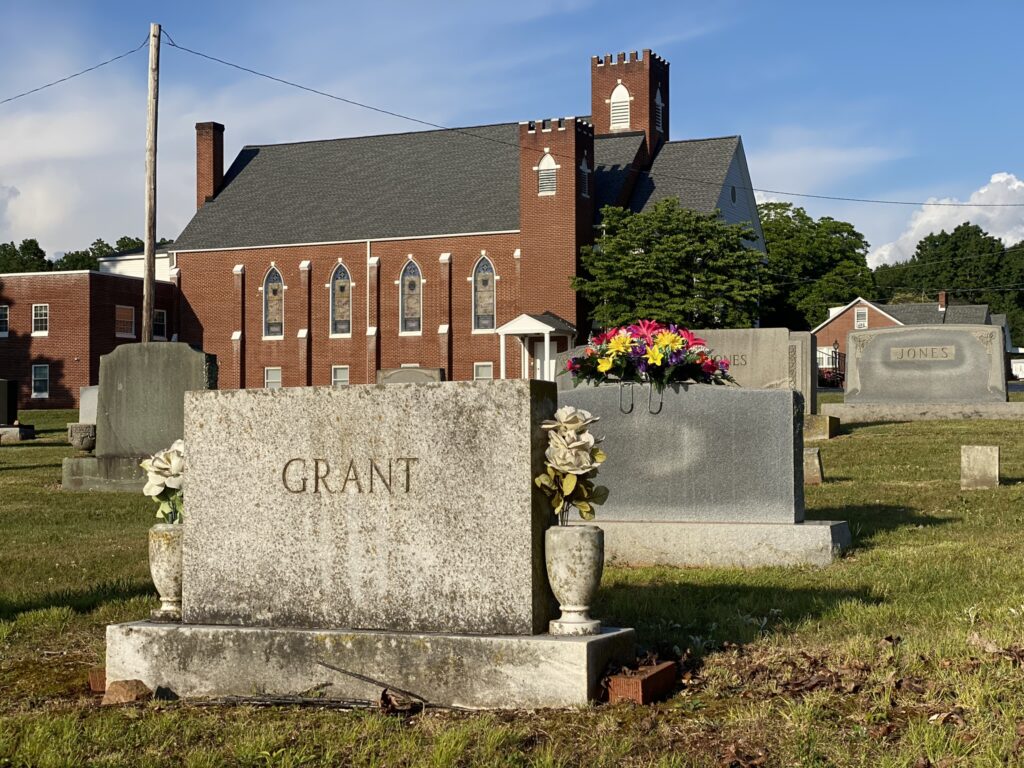
A perspective of Emmanuel Pentecostal Holiness Church in Dry Fork. The headstone of my great-grandparents George & Louise Grant is in the foreground.
